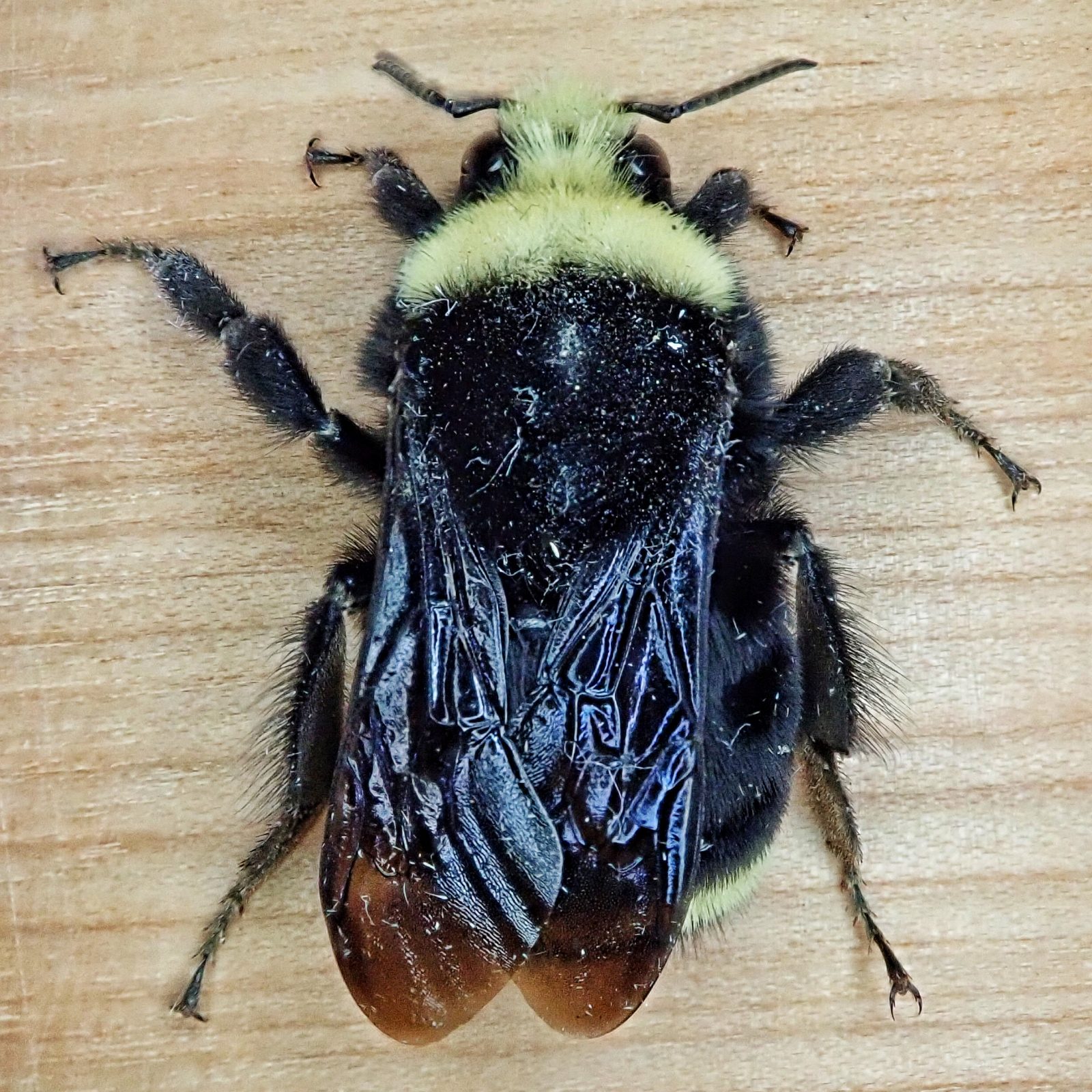
Sporting a rust-colored red head and middle segments, cicada killer wasps are also identified by their yellow-and-black striped back segment, and their antennae and wings are tinted yellow. Not all bees make honey, have stingers, or are black and yellow. Resembling a large yellow jacket, cicada killer wasps can grow up to 1 ½ inches long. This is a large, native bee with the same general shape as a bumblebee. You might see female wasps carrying paralyzed katydids, spiders, or other prey and stuffing them into holes originally excavated by carpenter bees. Three main body parts: head, thorax, abdomen A pair of antennae on top of their head Three pairs of jointed legs Compound eyes Bees all fall within the superfamily Apoidea, which also includes wasps. A number of insects can be confused with bumble bees, chief among these is the eastern carpenter bee. Just as the nest cavities drilled into wood by woodpeckers become nesting space for other birds after the woodpeckers have moved on, the holes of carpenter bees are often used by other insects that need holes. The bee fly larvae eat the carpenter bee larvae. It is often found in large numbers around latrines, slaughter-houses, animal facilities, meat markets and fish markets. It has yellow bands at the collar, rear of the thorax and at the first. The carpenter bee, unaware that she's being tricked, seals the chamber with what can only feel like a sense of completion. The Oriental Latrine Fly is a shiny greenish-blue blow fly with a yellow face and large reddish eyes. The garden bumblebee is a large, scruffy-looking bee, with a long tongue and face. The bee fly sneaks in and deposits her eggs where the carpenter bee lays hers.

The mother tiger bee fly ( Xenox tigrinus) hovers around wooden privacy fences, wooden roof overhangs, and similar wooden surfaces, looking for places where a mother carpenter bee is preparing a nest tunnel. One species of bee fly (a true fly that only resembles a bee) makes its living from carpenter bees. In nature, their tunneling into soft, dry, rotting wood speeds decomposition, helping to recycle nutrients back into the soil.īiologists study carpenter bees because their behavior seems transitional between solitary and true social behavior. The small carpenter bee ( Ceratina) also has characteristics of carpenter bees, but they have a slender greenish-black metallic body.

The large carpenter bee ( Xylocopa) is a big black bee with a shiny body, six legs, and two pairs of wings. Carpenter bees are important pollinators for many types of plants. Cicada killers (Family: Crabronidae) (Figure 10) are solitary wasps and large ( to 2 inches long) with a yellow face, red eyes and a black abdomen with yellow. On the right: The large carpenter bee ( Xylocopa) Black bees are two types of carpenter bees.


 0 kommentar(er)
0 kommentar(er)
